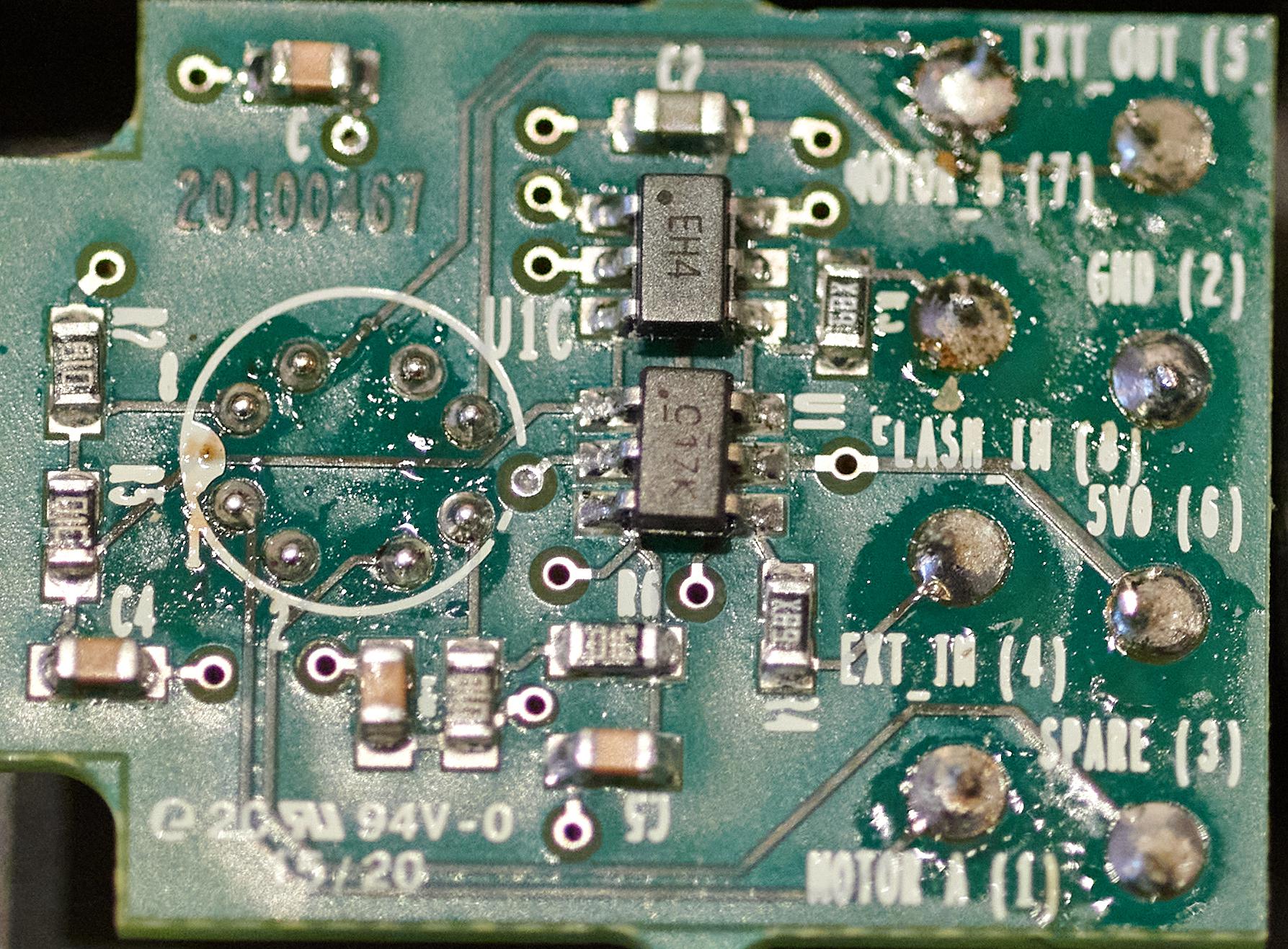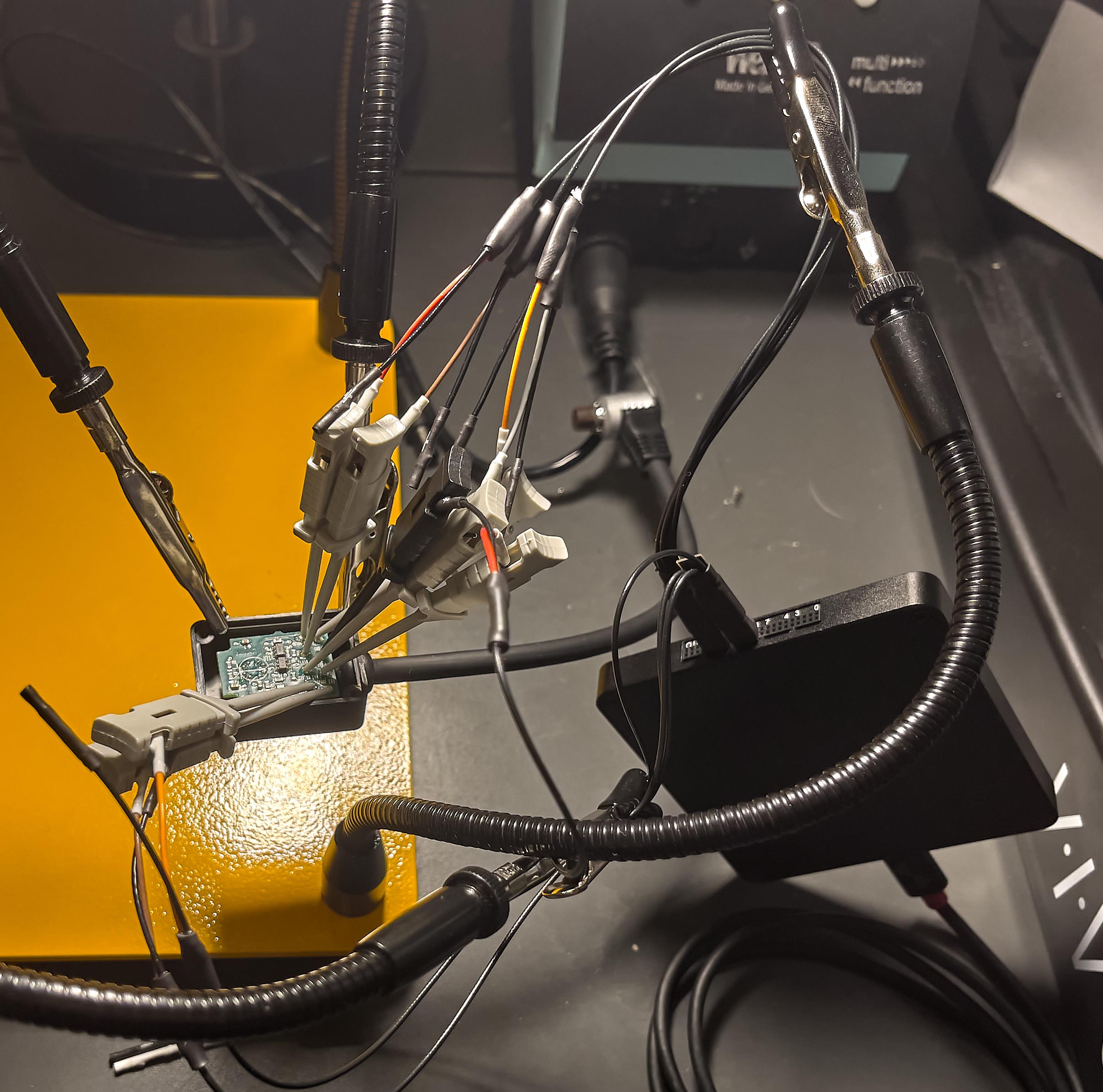Phase One 8 Pin Sync Cable Pinout
For many (literally) years, I've been looking for any information on the pinouts/connectors for old Phase One and Mamiya gear. The main reason for doing so is to make developing custom camera bodies for digital backs.
It turns out that the Phase One Sync Cleaner Cable has a pinout silkscreened onto the board!

The pinout of the connector: 1. MOTOR A 2. GND 3. SPARE 4. EXT_IN 5. EXT_OUT 6. 5Vo 7. MOTOR_B 8. FLASH_IN
And a helpful image diagram, looking at the connector top down:

I'm still searching for the name of this connector, but at least now we know what it connects to! Next up is to throw it under the logic analyzer:

I'm using an inexpensive dslogic plus USB logic analyzer (LA), which is simple to use. Each channel has a pair of flying leads, one to tap the signal under test and the other a ground. While each wire has a ground, this LA has a common ground for everything (Including the USB port!).
After setting everything up, I plugged the sync cleaner cable into the 8 pin port on my digital back, and hooked the dslogic plus up to my MacBook. When I triggered the back's electronic shutter every signal recorded a logic low except the EXT_IN and FLASH_IN signals, which were pulled high. That at least, makes sense, as in theory you should be able to trigger this back by pulling either input low. Perhaps my back has a broken 8 pin connector (very unlikely), or I'm using the LA wrong (more likely), or more interesting things only happen when connected to a body. I also tried capturing any signals that occurred when the back powered up/down, but this also didn't show anything useful, other than the signals that are typically pulled high getting pulled low.
While somewhat disappointing that I couldn't see anything with my LA, at least there are other ways to control the back without using a body, if I can find/manufacture a connector to the interface between the body and the back. Hopefully probing the lens interface to understand how to manually control the lens apertures for the Mamiya/Phase One 645 mount is more enlightening :)